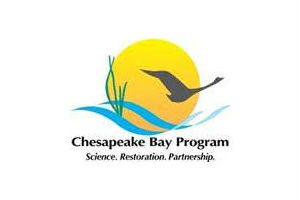
The actions respond to Directive 21-1 Collective Action for Climate Change (Directive) approved and signed by the Chesapeake Executive Council in October 2021. The Chesapeake Executive Council establishes the policy direction for the restoration and protection of the Chesapeake Bay and is made up of the governors of Delaware, Maryland, New York, Pennsylvania, Virginia and West Virginia, the mayor of the District of Columbia, the chair of the tri-state, legislative Chesapeake Bay Commission and the administrator of the Environmental Protection Agency on behalf of the federal government.
Federal agencies partners of the Chesapeake Bay Program include the EPA, the Department of Interior (National Park Service, U.S. Fish and Wildlife Service and U.S. Geological Survey), the National Oceanic and Atmospheric Administration, the Department of Defense, the U.S. Army Corps of Engineers and the Department of Agriculture.
Included among each agency’s actions are efforts to reduce flooding in communities, increase habitat resiliency with stream-side vegetation and shorelines protected by natural materials, and strengthen science and research to help target climate adaptation efforts.
The actions also highlight a commitment from each federal department and agency to advance environmental justice and commit to ongoing partnerships with tribes and underserved communities, to help build their climate adaptive capacity.
The actions are focused on the four major goals of the Directive: to address the threats of climate change in all aspects of the partnership’s work; prioritize communities, working lands (forests, ranches and farms) and most vulnerable habitats; apply the best scientific, modeling, monitoring and planning capabilities; and connect restoration outcomes with emerging opportunities.
A snapshot of some of the commitments include:
- The U.S. Fish and Wildlife Service will conduct pilot studies in Cambridge, Maryland and Williamsport, Pennsylvania, as well as in two tribal communities to prioritize natural resources, wildlife habitats and public infrastructure needs in underserved communities at risk due to climate change. These pilot studies are part of the partnership’s Targeted Outreach for Green Infrastructure project.
- The EPA will enhance their understanding through research as to how best management practices respond to the increased intensity, frequency and duration of storms caused by climate change. The agency will also target actions to support local government implementation of climate-adapted practices and build resilience against storms and stormwater using a recently completed web-based tool designed to estimate future precipitation for every county in the Chesapeake Bay watershed.
- The National Park Service will conduct climate vulnerability assessments of all coastal park sites in the Chesapeake Bay region to generate recommendations for climate resiliency. The NPS has also started a dialogue with members of the Underground Railroad Network to Freedom about the impacts that sites face from climate change.
- The S. Geological Survey will assess the potential effects of climate and land changes on freshwater streams and fish populations, as well as the vulnerability of coastal areas, to help agencies plan adaption activities.
The specific commitments for each federal agency can be found on the Chesapeake Bay Program’s website at www.chesapeakebay.net/documents/Climate_Directive_4.26.22.pdf.










